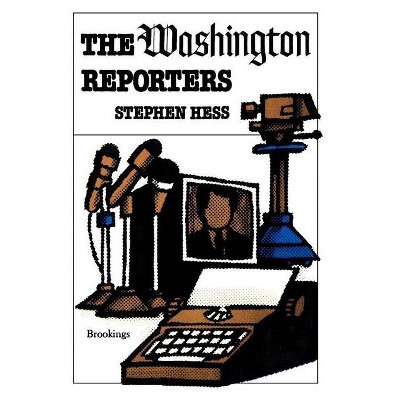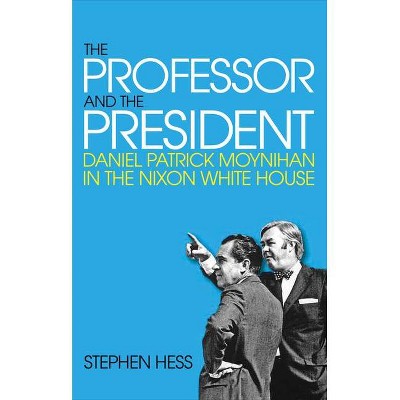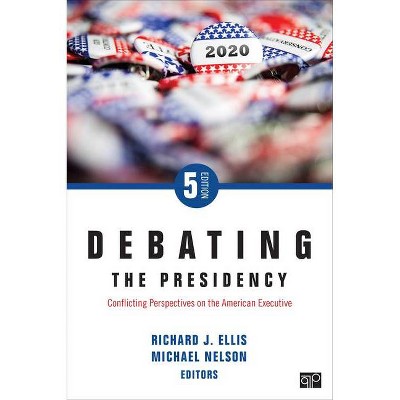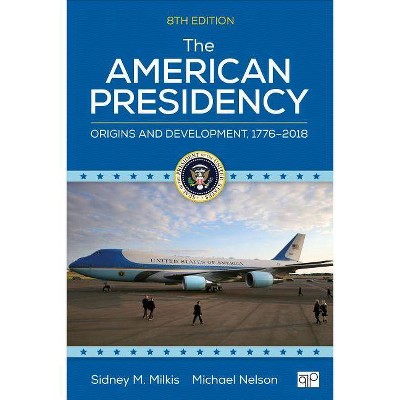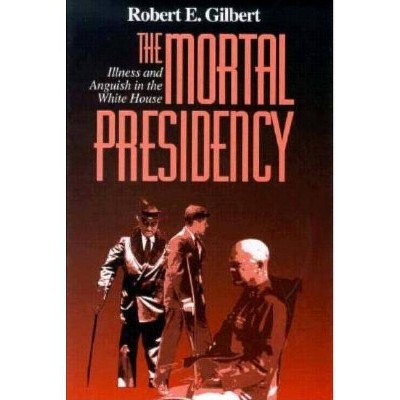Organizing the Presidency - 4th Edition by Stephen Hess & James P Pfiffner (Paperback)
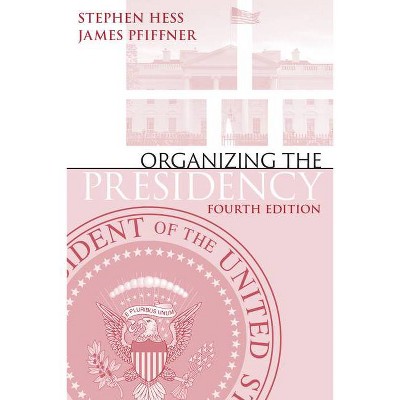
Similar Products
Products of same category from the store
AllProduct info
<p/><br></br><p><b> Book Synopsis </b></p></br></br><p><b>Examining how the White House works--or doesn't--before and after Trump</b></p><p>Donald Trump has reinvented the presidency, transforming it from a well-oiled if sometimes cumbersome institution into what has often seemed to be a one-man show. But even Trump's unorthodox presidency requires institutional support, from a constantly rotating White House staff and cabinet who have sought to carry out--and sometimes resist--the president's direct orders and comply with his many tweets.</p><p>Nonetheless, the Trump White House still exhibits many features of its predecessors over the past eight decades. When Franklin D. Roosevelt was inaugurated, the White House staff numbered fewer than fifty people, and most federal department were lightly staffed as well. As the United States became a world power, the staff of the Executive Office increased twentyfold, and the staffing of federal agencies blossomed comparably.</p><p>In the fourth edition of <i>Organizing the Presidency</i>, a landmark volume examining the presidency as an institution, Stephen Hess and James P. Pfiffner argue that the successes and failures of presidents from Roosevelt through Trump have resulted in large part from how the president deployed and used White House staffers and other top officials responsible for carrying out Oval Office policy. Drawing on a wealth of analysis and insight, <i>Organizing the Presidency</i> addresses best practices for managing a presidency that is itself a bureaucracy.</p><p/><br></br><p><b> From the Back Cover </b></p></br></br><p>When Franklin D. Roosevelt was inaugurated president in March 1933, the White House staff numbered fewer than fifty people. Since then, as the United States became a world power and both the foreign and domestic duties of the president grew more complex, the White House staff has increased dramatically.</p><p><i>Organizing the Presidency</i>, now in its fourth edition, asks how best to manage a presidency that itself has become a bureaucracy. Stephen Hess joins with James P. Pfiffner to survey how presidents from Franklin Roosevelt to Donald Trump have organized their administrations and guided the changing responsibilities of executive branch jobs and their relationships with one another, with Capitol Hill, and with the permanent government. The authors also describe the variety of people who have filled these positions and the intentions of the presidents who appointed them.</p><p/><br></br><p><b> Review Quotes </b></p></br></br><br><p>"Notable for its broad coverage, considerable insight, and graceful writing."--<i>Presidential Studies Quarterly</i></p><br><br><p>"This is the first book on the presidency that leaves readers with the feeling that they have read a comprehensive treatment of the subject."--<i>Annals of the American Academy</i></p><br><p/><br></br><p><b> About the Author </b></p></br></br><p><b>Stephen Hess</b> is a senior fellow emeritus in Governance Studies at the Brookings Institution. His many public service roles include serving on the White House staff during the Eisenhower and Nixon presidencies and as adviser to Presidents Ford and Carter. He is the author of numerous books published by the Brookings Institution Press, including <i>Bit Player</i>, <i>The Professor and the President</i>, and <i>America's Political Dynasties</i>.</p><p><b>James P. Pfiffner</b> is University Professor of Public Policy at George Mason University. He has written or edited over a dozen books on the presidency and American government, including <i>The Strategic Presidency: Hitting the Ground Running</i>, <i>Understanding the Presidency</i>, and <i>Power Play: The Bush Presidency and the Constitution</i>.</p>
Price History
Cheapest price in the interval: 32.99 on November 8, 2021
Most expensive price in the interval: 32.99 on December 20, 2021
Price Archive shows prices from various stores, lets you see history and find the cheapest. There is no actual sale on the website. For all support, inquiry and suggestion messagescommunication@pricearchive.us
